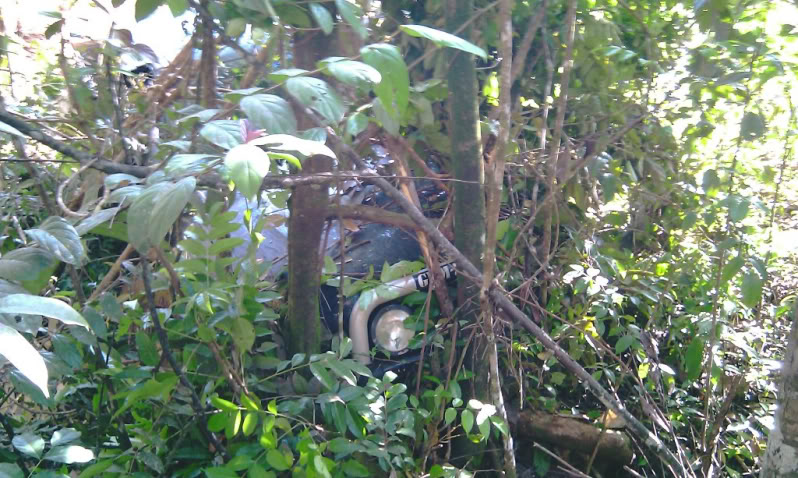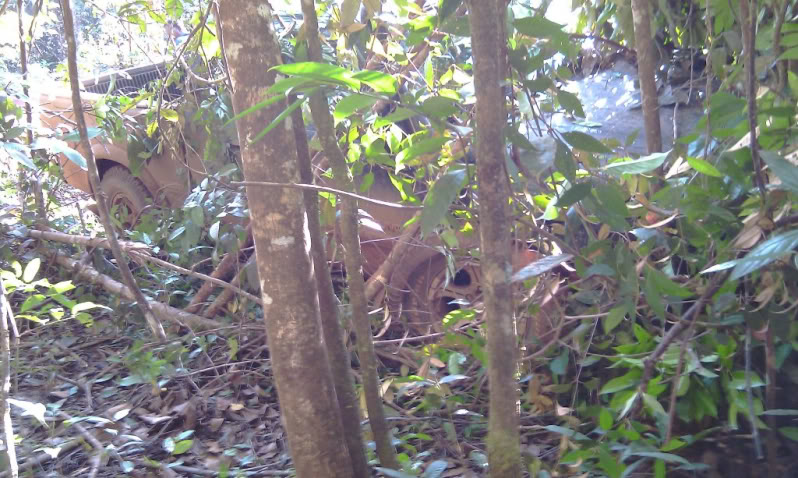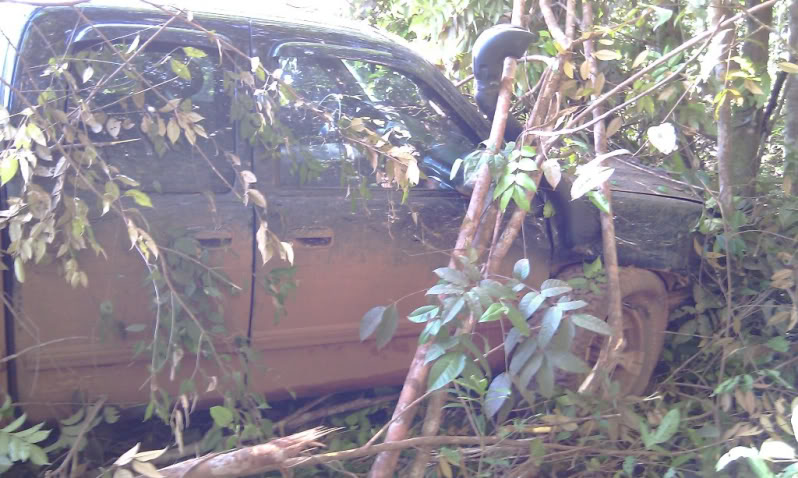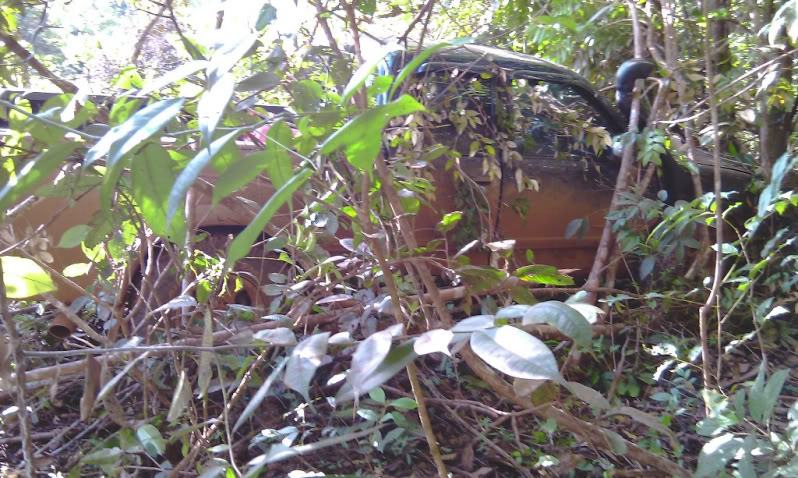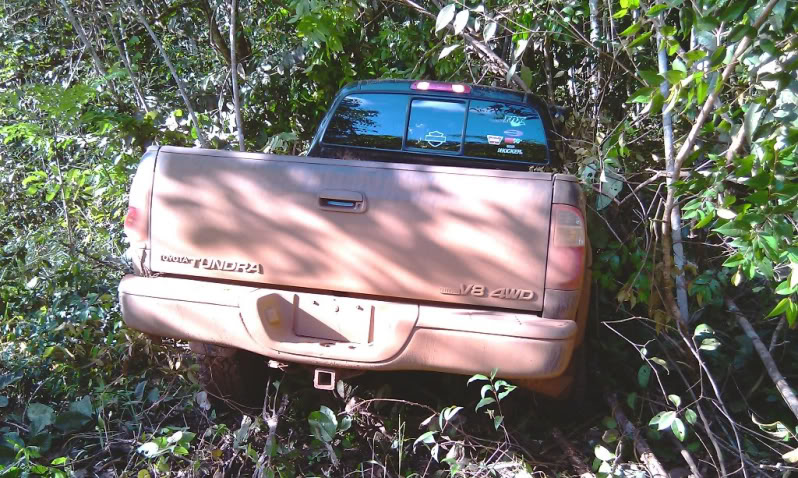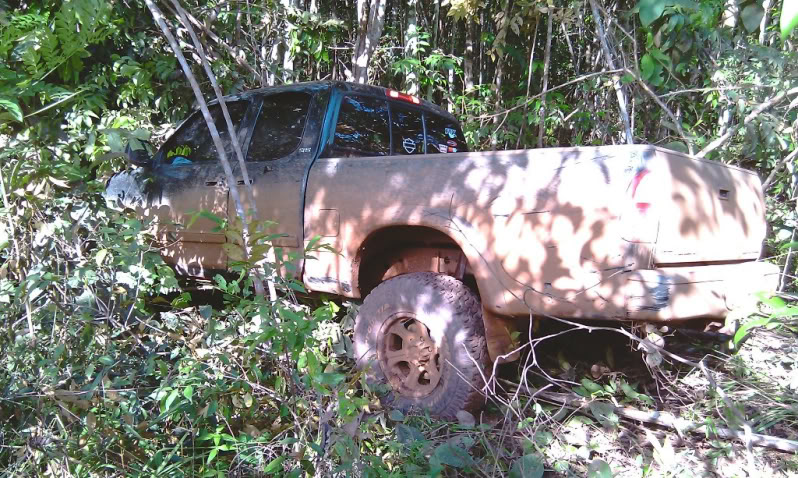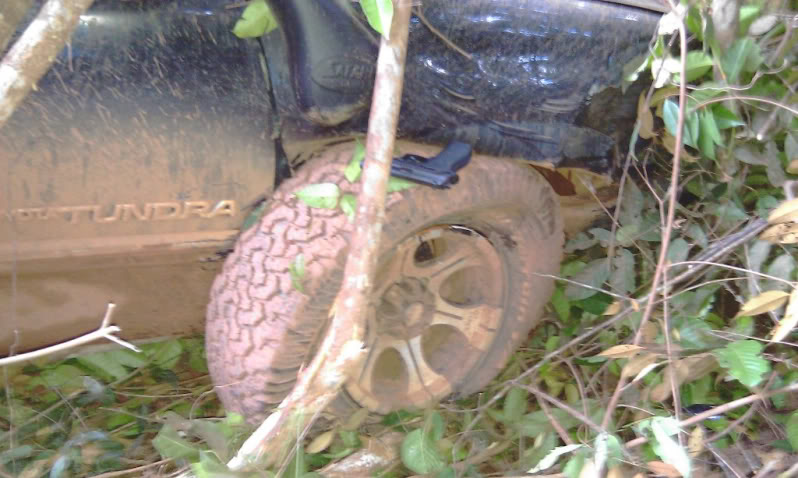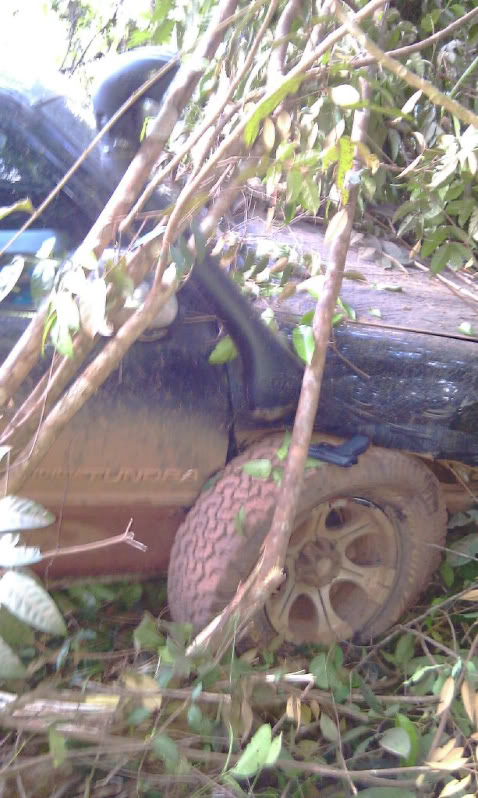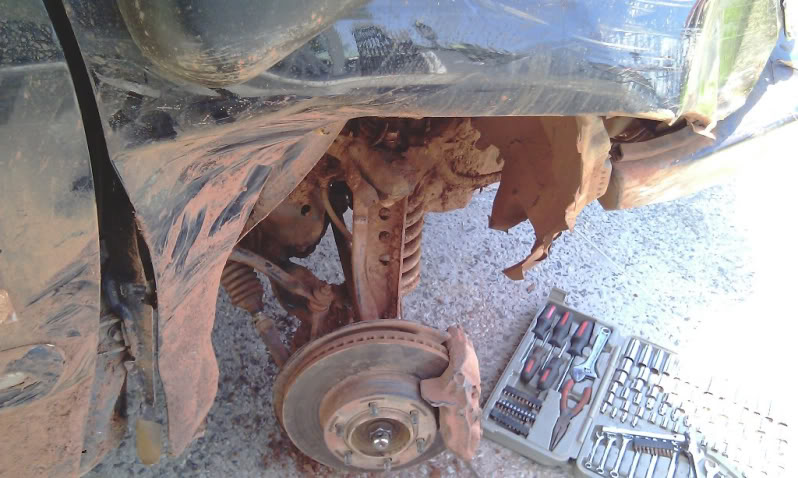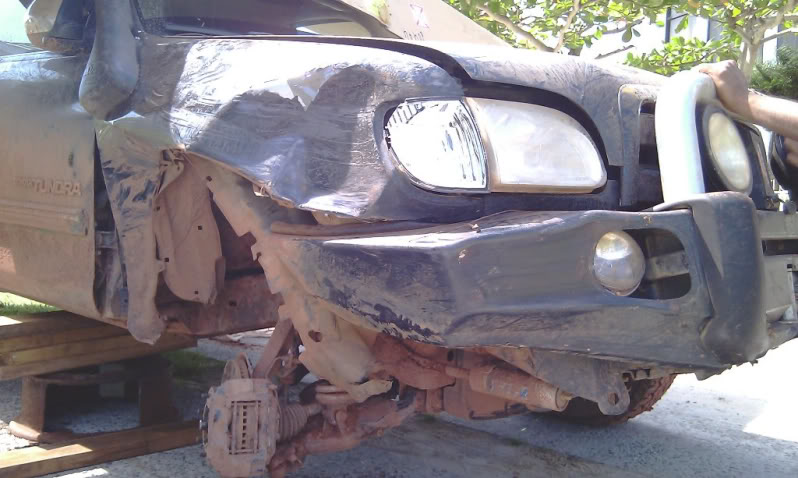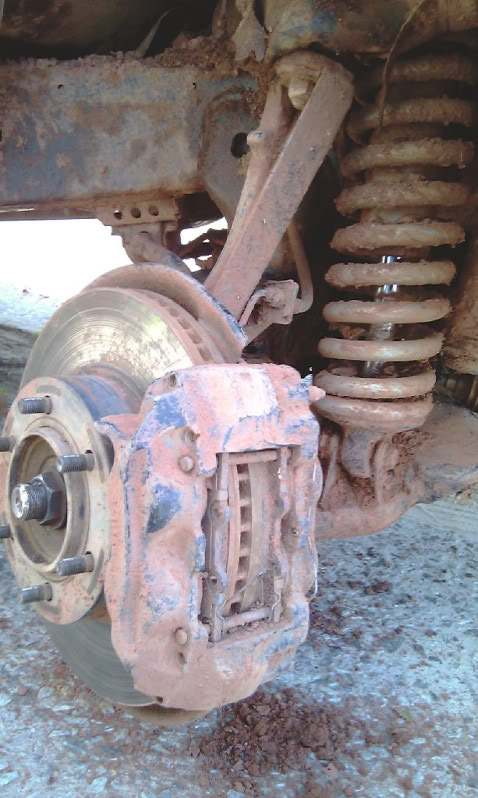Last edit by: IB Advertising
See related guides and technical advice from our community experts:
Browse all: Toyota Tundra Steering & Suspension Guides
- Toyota Tundra 2000-Present: Recalls and Technical Service Bulletins <br>Important information to help you understand your Tundra.
- Toyota Tundra How to Replace Ball Joints<br>Step by step instructions for do-it-yourself repairs.
- Toyota Tundra Suspension Diagnostic Guide<br>Guide to diagnose trouble and recommended solutions.
Browse all: Toyota Tundra Steering & Suspension Guides
Tundra Catastrophic Balljoint failure
#3
If the ball joint bolts were found to be sheared after the fact, that doesn't necessarily mean that they were sheared before it. Meaning, the accident is more likely to be what caused them to fail. Rather than they failed causing the accident.
It doesn't appear to me like any type of component failure is the official cause of the accident. I think the driver is just reaching for any possible excuse as to why he failed(to keep the truck on the road/trail). And/or he knows the real reason that the bolts failed, but is trying to blame the "accident" on Toyota. Sorry guy, when you're wheeling and something breaks...it's not Toyota's fault.

It doesn't appear to me like any type of component failure is the official cause of the accident. I think the driver is just reaching for any possible excuse as to why he failed(to keep the truck on the road/trail). And/or he knows the real reason that the bolts failed, but is trying to blame the "accident" on Toyota. Sorry guy, when you're wheeling and something breaks...it's not Toyota's fault.

Last edited by MudHippy; 09-04-2012 at 10:03 AM.
#4
If the ball joint bolts were found to be sheared after the fact, that doesn't necessarily mean that they were sheard before it. Meaning, the accident is more likely to be what caused them to fail. Rather than they failed causing the accident.
It doesn't appear to me like any type of component failure is the official cause of the accident. I think the driver is just reaching for any possible excuse as to why he failed(to keep the truck on the road). And/or he knows the real reason that the bolts failed, but is trying to blame the "accident" on Toyota.

It doesn't appear to me like any type of component failure is the official cause of the accident. I think the driver is just reaching for any possible excuse as to why he failed(to keep the truck on the road). And/or he knows the real reason that the bolts failed, but is trying to blame the "accident" on Toyota.

#5
Toyota has used that design since the introduction of IFS in 1986. It is not a design flaw and has proven to be a pretty stout set-up. Furthermore, the bolts that hold in the ball joint just do not "fall out" and are more than adquate for the intended purpose. There must have been someone in there before that did not know how to use a torque wrench on the bolts and or compromised the system.
Tundras are not known for ball joint failures, not saying it can't happen, but they are rare. I bet who ever "built" your truck took some shortcuts and compromised your truck more than the "engineers".
Tundras are not known for ball joint failures, not saying it can't happen, but they are rare. I bet who ever "built" your truck took some shortcuts and compromised your truck more than the "engineers".
#6
I hate to say it. but blame this on Toyota and they'll flat out laugh at you.
the truck is lifted, bigger tires, and looks to be wheeled. ( mud on the entire side of the truck ) and its a tundra ( heavy ) everybody knows that doing these things cause added strain to the suspension setup.
I'd like to know a little bit of information...
My uncle has a little over 200k on a 2001 tundra w/ 305/70R16s and a 3" lift. its been street driven its entire life and he's never had to replace a ball joint.
How many miles on the truck that crashed and have the ball joints ever been replaced? Guarantee they've never been touched.
Guarantee they've never been touched.
the truck is lifted, bigger tires, and looks to be wheeled. ( mud on the entire side of the truck ) and its a tundra ( heavy ) everybody knows that doing these things cause added strain to the suspension setup.
I'd like to know a little bit of information...
My uncle has a little over 200k on a 2001 tundra w/ 305/70R16s and a 3" lift. its been street driven its entire life and he's never had to replace a ball joint.
How many miles on the truck that crashed and have the ball joints ever been replaced?
 Guarantee they've never been touched.
Guarantee they've never been touched.
#7
This is a known problem with these Trucks and they are well known for these failures. It's a poor design on Toyotas behalf. This Tundra is one of the few down there that up to this point didn't have that issue. For some reason 2 of the supporting bolts fell out and stressed the others which cut. The Engineers screwed up..there is no way that tehe loaded balljoint should be secured to the truck using 4 Small 14mm bolts supporting the weight of the truck!!!! ALS the loaded lower arm ball joint should never be a pull apart design which fails catastrophically if the ball finally pulls out of its socket!! This flaw is only found on the First gen Tundra, Second Gen Tacoma and 3Rd gen 4Runner. Toyota fixed tehe design on all later model trucks. I am a Toyota Addict and must say..they blew it on this one,
So let me tell you what/why it is then. That "some reason" is due to the design of the steering knuckle, NOT the lower ball joint. The lower ball joint on the early designs(pre-98) also served as the knuckle arm(integral to the lower ball joint), which was bolted to the steering knuckle by 4 bolts. That design puts all the steering torque/stress applied to the steering knuckle onto the lower ball joint bolts where they connect the lower ball joint to the steering knuckle. Which is why the bolts would need to be payed special attention to. Or, when/if they fail, you'll lose the ability to steer whichever wheel(No bolts = No knuckle arm = No steering the steering knuckle/spindle/wheel). HOWEVER, since the ball joint would no longer be connected to the steering knuckle by any bolts, it's NOT going to pull apart.

The newer designed steering knuckles(98+) now serve as the knuckle arm(the arm is integral to the knuckle). With the lower ball joints pressed into the LCAs. The steering knuckles then connect to the lower ball joints using only 2 bolts. Which solves the problem of the bolts having to withstand any of the steering forces(hence 2 fewer bolts).

Last edited by MudHippy; 09-04-2012 at 11:05 AM.
Trending Topics
#8
You don't even understand why the bolts failed. Other than, "for some reason", 2 fell out, and the last 2 sheared.
So let me tell you what/why it is then. That "some reason" is due to the design of the steering knuckle, NOT the lower ball joint. The lower ball joint on the early designs(pre-98) also served as the knuckle arm(integral to the lower ball joint), which was bolted to the steering knuckle by 4 bolts. That design puts all the steering torque/stress applied to the steering knuckle onto the lower ball joint bolts where they connect the lower ball joint to the steering knuckle. Which is why the bolts would need to be payed special attention to. Or, when/if they fail, you'll lose the ability to steer whichever wheel(No bolts = No knuckle arm = No steering the steering knuckle/spindle/wheel). HOWEVER, since the ball joint would no longer be connected to the steering knuckle by any bolts, it's NOT going to pull apart.

The newer designed steering knuckles(98+) now serve as the knuckle arm(the arm is integral to the knuckle). With the lower ball joints pressed into the LCAs. The steering knuckles then connect to the lower ball joints using only 2 bolts. Which solves the problem of the bolts having to withstand any of the steering forces(hence 2 fewer bolts).

So let me tell you what/why it is then. That "some reason" is due to the design of the steering knuckle, NOT the lower ball joint. The lower ball joint on the early designs(pre-98) also served as the knuckle arm(integral to the lower ball joint), which was bolted to the steering knuckle by 4 bolts. That design puts all the steering torque/stress applied to the steering knuckle onto the lower ball joint bolts where they connect the lower ball joint to the steering knuckle. Which is why the bolts would need to be payed special attention to. Or, when/if they fail, you'll lose the ability to steer whichever wheel(No bolts = No knuckle arm = No steering the steering knuckle/spindle/wheel). HOWEVER, since the ball joint would no longer be connected to the steering knuckle by any bolts, it's NOT going to pull apart.

The newer designed steering knuckles(98+) now serve as the knuckle arm(the arm is integral to the knuckle). With the lower ball joints pressed into the LCAs. The steering knuckles then connect to the lower ball joints using only 2 bolts. Which solves the problem of the bolts having to withstand any of the steering forces(hence 2 fewer bolts).

Yes I built the truck a few years ago and it's done thousands of miles Off Road without a problem until a few days ago. The securing bolts should have been periodically checked or even periodically replaced as they are under alot of stress.
Also yessss The Tundras, Tacomas and 4Runners with this type of suspension have all had this problem!!!! I can post tons of pics here with all the catastrophic failures!!!!!
I dare you to find one case of the first gen IFS or the new trucks failing in this manner.
If there was no problem with this design...Why did Toyota redesign the suspension on the newer trucks with a Failsafe design???
Why was Toyota the only manufacturer to put the ball on top of the load arm???
It is a design flaw. And a dangerous one at that.
The new trucks have two huge heavy duty securing bolts taking up the stress now. Previous design is 4 small 14 mm bolts...under tension.
E
Last edited by milowilli; 09-04-2012 at 11:53 AM.
#9
Bolts properly torqued and checked don't just fall out.
Lots of designs change on countless products not because they were bad or flawed, but simply improved. If not the case we'd all still be using AOL dial up Internet.
:wabbit2:
Lots of designs change on countless products not because they were bad or flawed, but simply improved. If not the case we'd all still be using AOL dial up Internet.
:wabbit2:
#10
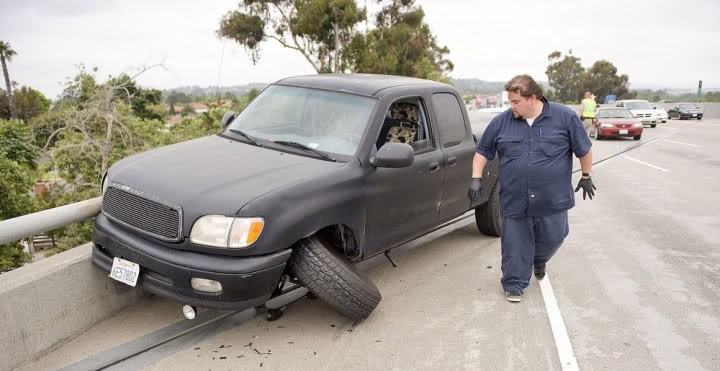
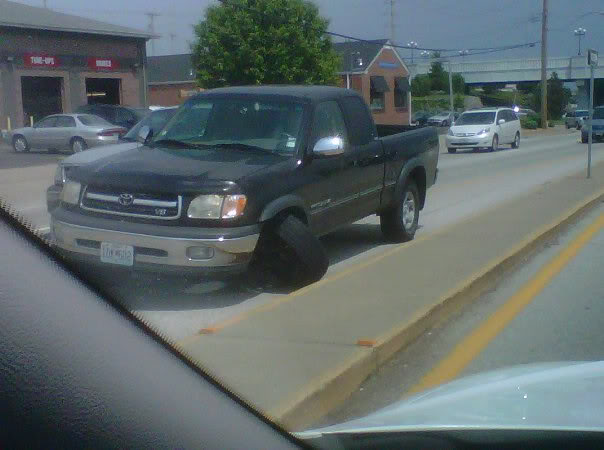
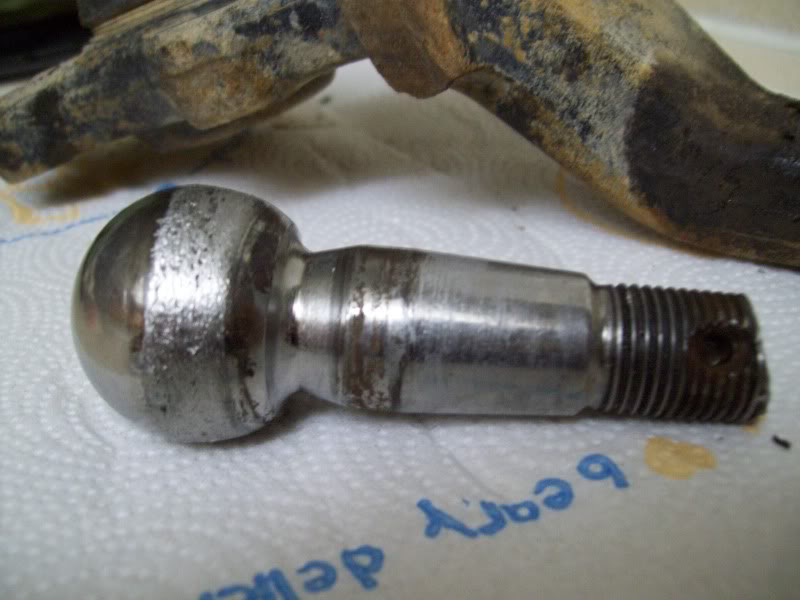
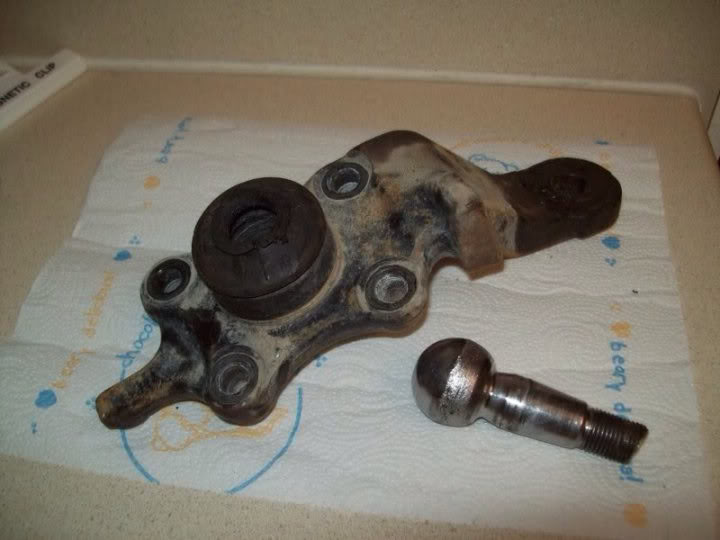
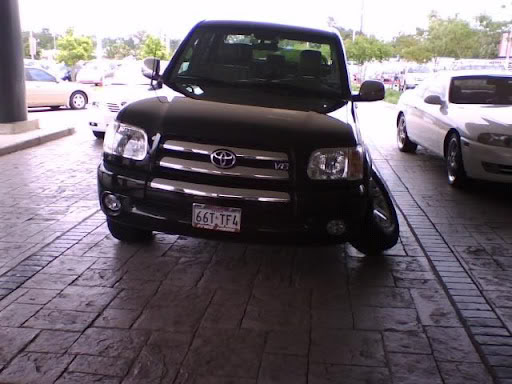
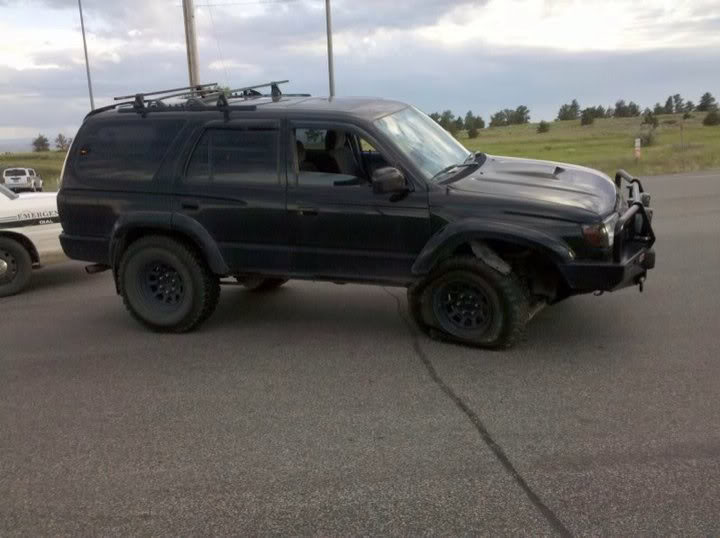
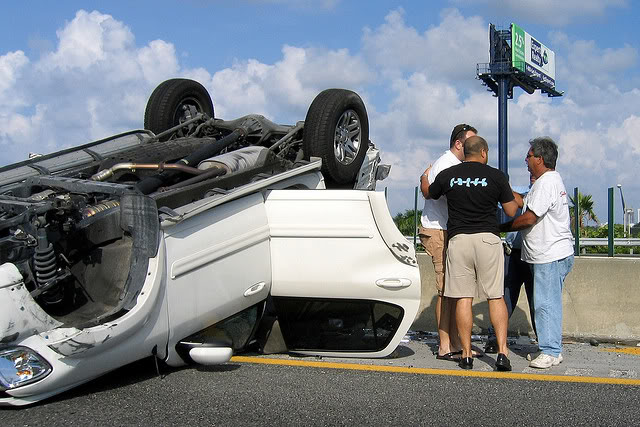
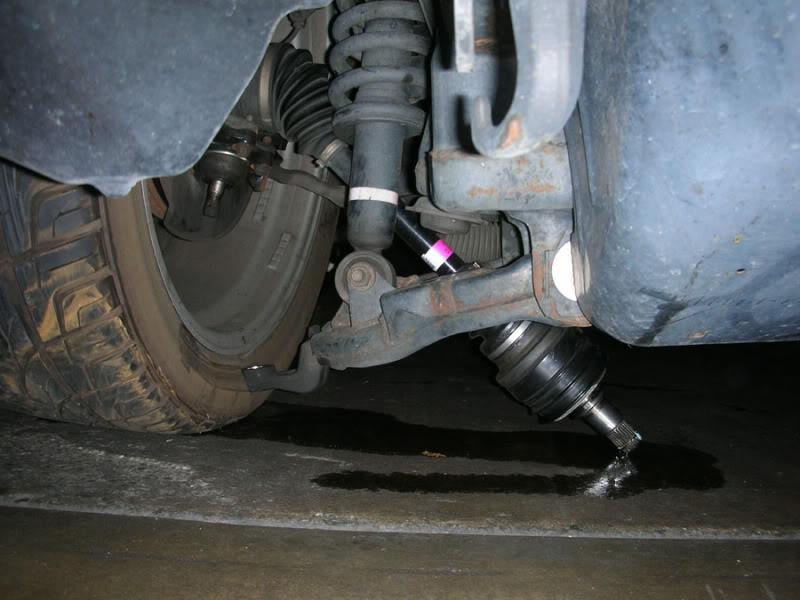
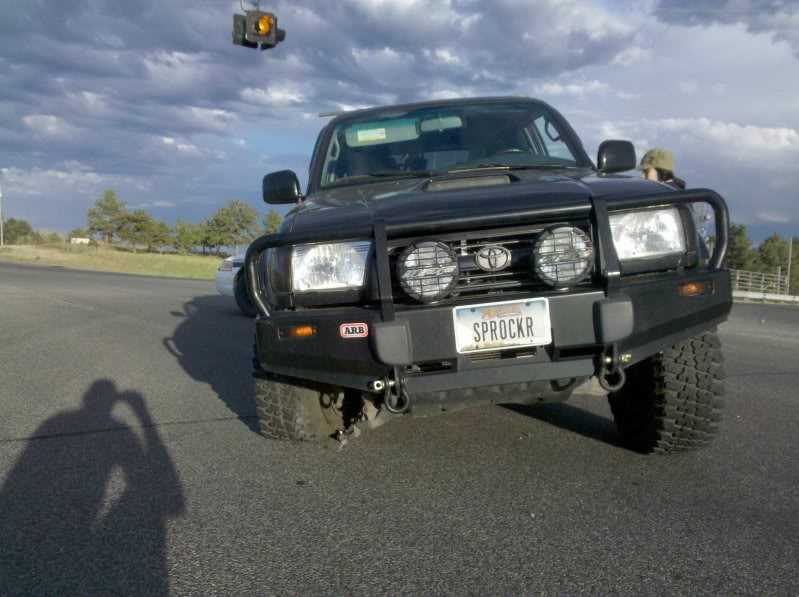
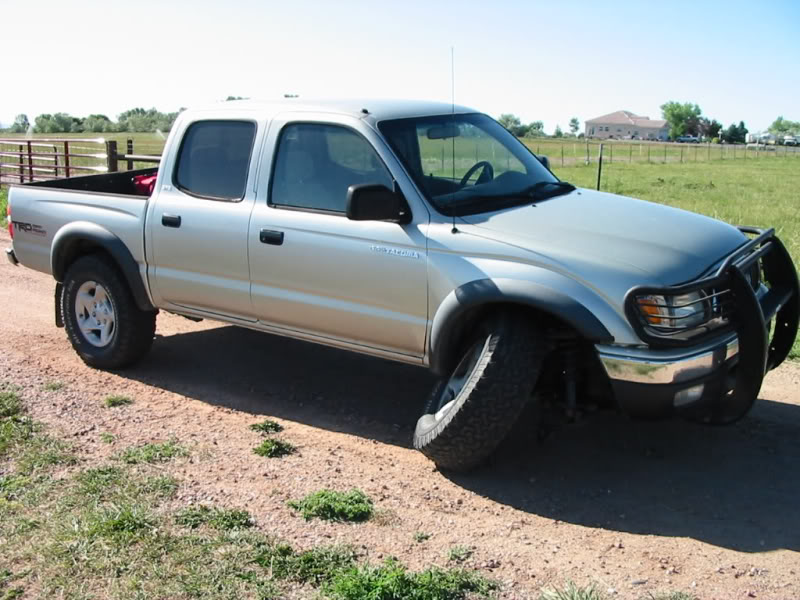
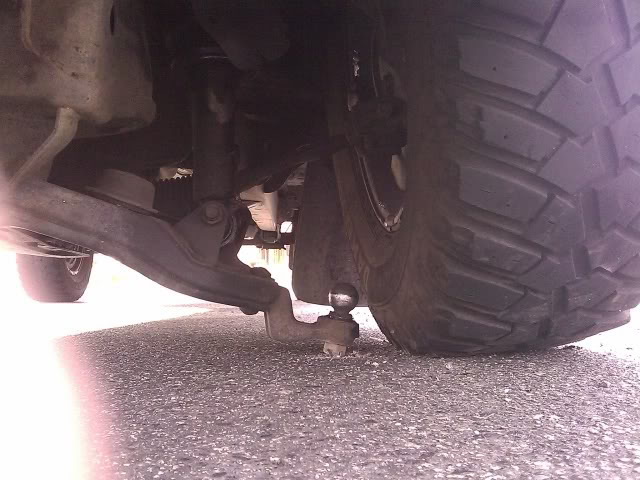
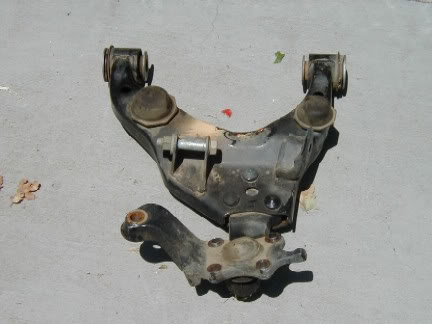
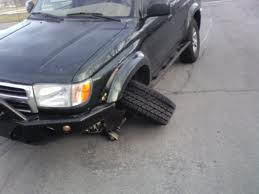
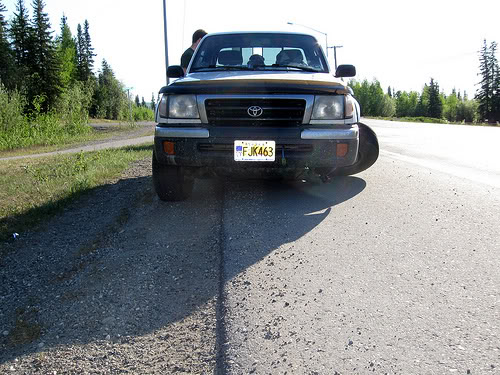
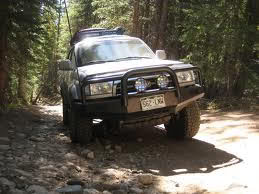
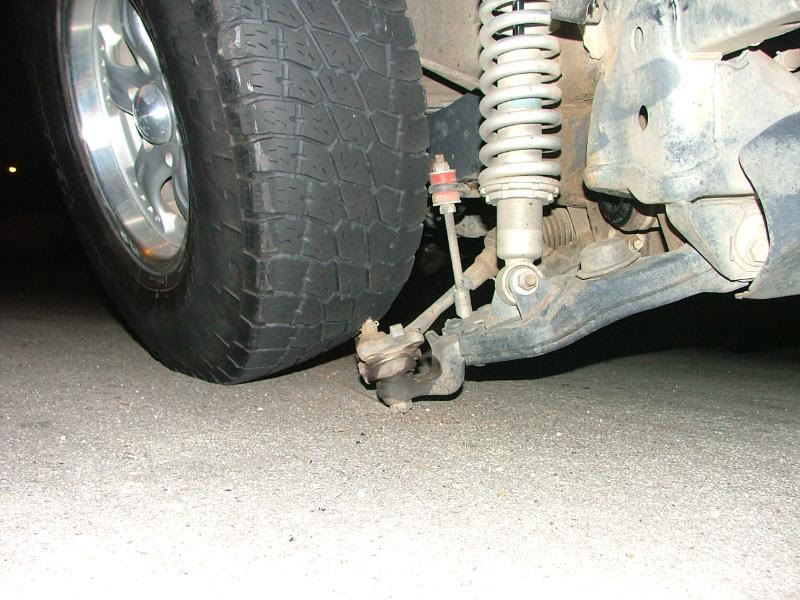
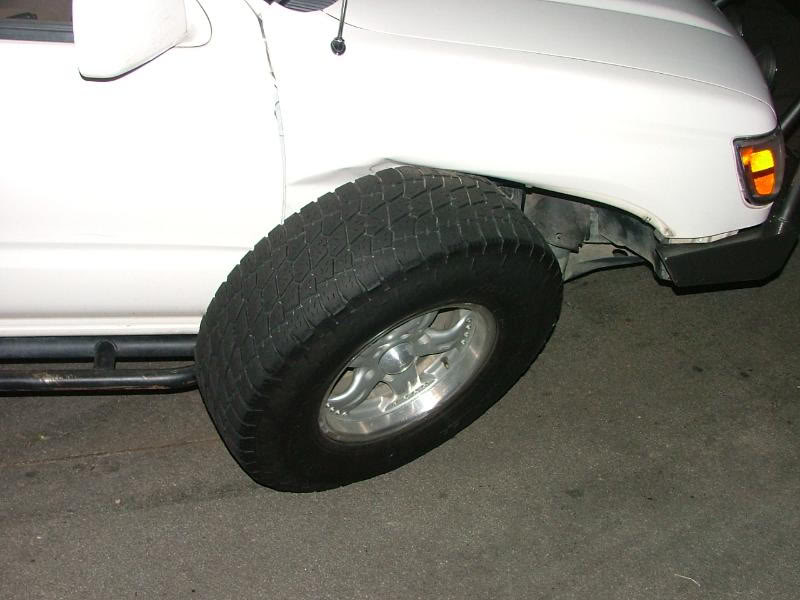
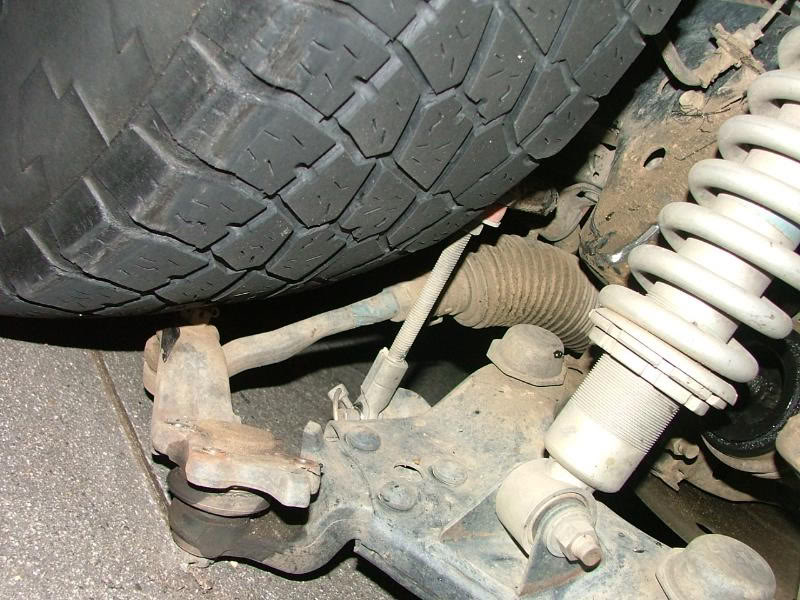
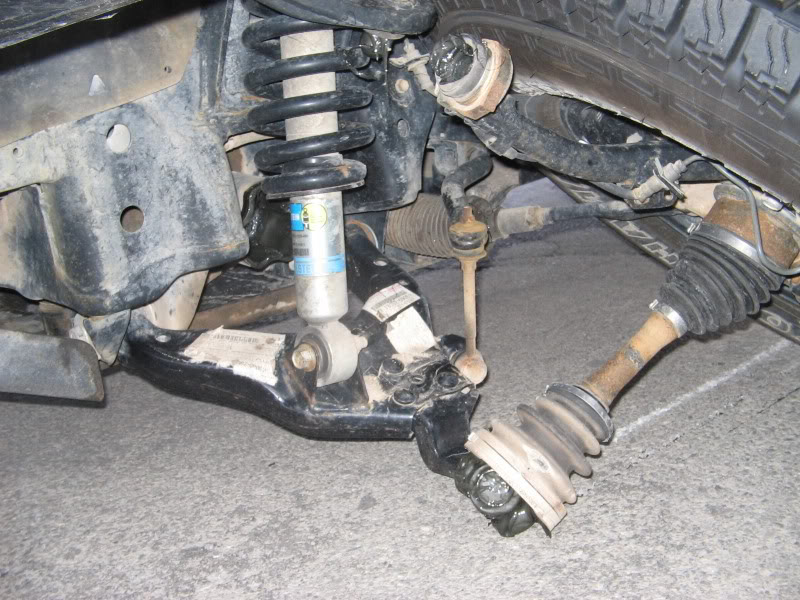
You can see all the failure points on this type suspension.... The ball, the 4x14mm bolts and the main lower securing nut...unheard of failure points in previous model trucks!!!
#12
There is just no convincing you that ball joint failures can happen on any vehicle. By the way, there are threads here on yotatech of ball joint failures for every generation of Toyota truck. I would point them out, however you seem to be all knowing...so I assume you've already seen these.
Anyways, a vehicle that is ran off-road should have the ball joints, as well as the entire steering and suspension system, checked before every run on the dirt. This would have given you a clue that something is out of sorts. I have yet to see this mentioned by you.
So, I see you would rather blame Toyota for your lack of common sense and failure to maintain your own vehicle. I see your logic now...
Anyways, a vehicle that is ran off-road should have the ball joints, as well as the entire steering and suspension system, checked before every run on the dirt. This would have given you a clue that something is out of sorts. I have yet to see this mentioned by you.
So, I see you would rather blame Toyota for your lack of common sense and failure to maintain your own vehicle. I see your logic now...
#13
Anyways, a vehicle that is ran off-road should have the ball joints, as well as the entire steering and suspension system, checked before every run on the dirt. This would have given you a clue that something is out of sorts. I have yet to see this mentioned by you.
So, I see you would rather blame Toyota for your lack of common sense and failure to maintain your own vehicle. I see your logic now...
So, I see you would rather blame Toyota for your lack of common sense and failure to maintain your own vehicle. I see your logic now...

#14
There is just no convincing you that ball joint failures can happen on any vehicle. By the way, there are threads here on yotatech of ball joint failures for every generation of Toyota truck. I would point them out, however you seem to be all knowing...so I assume you've already seen these.
Anyways, a vehicle that is ran off-road should have the ball joints, as well as the entire steering and suspension system, checked before every run on the dirt. This would have given you a clue that something is out of sorts. I have yet to see this mentioned by you.
So, I see you would rather blame Toyota for your lack of common sense and failure to maintain your own vehicle. I see your logic now...
Anyways, a vehicle that is ran off-road should have the ball joints, as well as the entire steering and suspension system, checked before every run on the dirt. This would have given you a clue that something is out of sorts. I have yet to see this mentioned by you.
So, I see you would rather blame Toyota for your lack of common sense and failure to maintain your own vehicle. I see your logic now...
Even with everything tightened up I wonder how comfortable you would be doing high speed driving off road knowing you have 3 possible failure points x 2 on your front suspension. Newer trucks just have 2 massive bolts under tension..possible failure point but non I have seen to date!!! The ball will never separate from the socket unless it's soooo badly worn that it just falls out.
PS...I don't know everything..just observant and get real upset when Toyotas fail because they are great trucks!!!
#15
There is just no convincing you that ball joint failures can happen on any vehicle. By the way, there are threads here on yotatech of ball joint failures for every generation of Toyota truck. I would point them out, however you seem to be all knowing...so I assume you've already seen these.
Anyways, a vehicle that is ran off-road should have the ball joints, as well as the entire steering and suspension system, checked before every run on the dirt. This would have given you a clue that something is out of sorts. I have yet to see this mentioned by you.
So, I see you would rather blame Toyota for your lack of common sense and failure to maintain your own vehicle. I see your logic now...
Anyways, a vehicle that is ran off-road should have the ball joints, as well as the entire steering and suspension system, checked before every run on the dirt. This would have given you a clue that something is out of sorts. I have yet to see this mentioned by you.
So, I see you would rather blame Toyota for your lack of common sense and failure to maintain your own vehicle. I see your logic now...
#16
But it's just like I've always said really, these new trucks can't hang offroad. So just don't go there in them. They aren't built like they used to be...PERIOD!!!
I dare you to find a early model torsion bar suspension or the late model truck failure like this.
You can see all the failure points on this type suspension.... The ball, the 4x14mm bolts and the main lower securing nut...unheard of failure points in previous model trucks!!!
You can see all the failure points on this type suspension.... The ball, the 4x14mm bolts and the main lower securing nut...unheard of failure points in previous model trucks!!!
It's because(as I explained previously):
a. The steering knuckle/knuckle arm design is flawed. That's why the bolts holding the lower ball joint to it are prone to fail on the first design. The bolts holding the lower ball joint to the steering knuckle on previous and later designs aren't prone to fail because the ball joints aren't being used as knuckle arms/steering components.
b. The reason that the lower ball joints fail by coming out of there sockets on the first version of the later IFS system is because of the use of coil spring suspension. Which is actually what causes them to wear on the parts of them that DON'T carry the load of the vehicle on the torsion bar IFS design under any circumstances. It's because of the force of the coil springs pushing the upper and lower control arms apart that causes the ball joints to fail in that way. Since with the first version coil spring design, under most circumstances, the weight of the vehicle is pushing the UCA up, while the coil spring is pushing down on the LCA. Meaning, the lower ball joint is then tension loaded in the opposite direction as the vehicle's weight every time the supension is static or in compression. It's only ever compression loaded by the vehicle's weight when the suspension is extending. Torsion bars DON'T apply the same force to the control arms. Basically it's because the torsion bars connect to the upper control arm, but the rest takes too long to explain(in short the UBJ is compression loaded by the weight of the vehicle at all times, while the LBJ is never under any significant tension or compression load, other than the loads applied by the gas-charged shocks). So that's why the upper and lower ball joints last nearly forever/almost never fail on the earlier models with torsion bar suspensions. The reason the ball joints don't fail like that on the second coil spring version is because the forces applied by the coil springs to the LCAs actually preloads the ball joint in the other direction(compression loading them in the same way as the vehicle's weight does). Which keeps the lower ball joints from pulling apart, as they are constantly being pushed together/compressed by either the weight of the vehicle when the suspension is static or extending, and/or by the compression force applied by the coil springs pushing the UCAs & LCAs apart when the suspension compresses.
Last edited by MudHippy; 09-10-2012 at 11:01 AM.
#17
I agree that the first design is crap. But paying attention to, and/or upgrading the bolts would prevent some of these failures. Yes?
But it's just like I've always said really, these new trucks can't hang offroad. So just don't go there in them. They aren't built like they used to be...PERIOD!!!
And why would that be? I can tell you one thing FOR SURE. It's not due to the design of the ball joints and/or how they're secured.
It's because as (I explained previously):
a. The steering knuckle/knuckle arm design is flawed. That's why the bolts holding the lower ball joint to it are prone to fail. The bolts holding the lower ball joint on previous models aren't prone to fail because the ball joints aren't be used as knuckle arms/steering components.
b. The reason that the lower ball joints fail by coming out of there sockets is because of the use of coil spring suspension. Which is actually what causes them to wear on the parts of them that DON'T carry the load of the vehicle under most circumstances. It's the force of the coil springs pushing the upper and lower control arms apart that causes the ball joints to fail in that way. Torsion bars DON'T apply the same force to the control arms. And so that's why the lower ball joints last nearly forever/almost never fail on the earlier models with torsion bar suspensions.
But it's just like I've always said really, these new trucks can't hang offroad. So just don't go there in them. They aren't built like they used to be...PERIOD!!!
And why would that be? I can tell you one thing FOR SURE. It's not due to the design of the ball joints and/or how they're secured.
It's because as (I explained previously):
a. The steering knuckle/knuckle arm design is flawed. That's why the bolts holding the lower ball joint to it are prone to fail. The bolts holding the lower ball joint on previous models aren't prone to fail because the ball joints aren't be used as knuckle arms/steering components.
b. The reason that the lower ball joints fail by coming out of there sockets is because of the use of coil spring suspension. Which is actually what causes them to wear on the parts of them that DON'T carry the load of the vehicle under most circumstances. It's the force of the coil springs pushing the upper and lower control arms apart that causes the ball joints to fail in that way. Torsion bars DON'T apply the same force to the control arms. And so that's why the lower ball joints last nearly forever/almost never fail on the earlier models with torsion bar suspensions.

Wear around the neck of ball which wears the lip of socket then pulls out!!
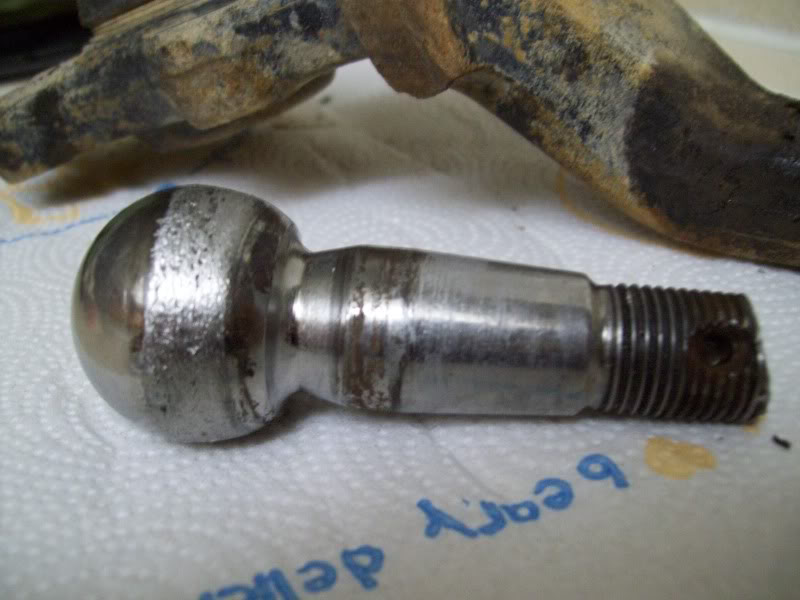
#18
This pic says it all!!! The spindle and wheel are bolted to ball joint... The coilover pressing down with lots of down force on Lower arm while the wheel is staying put on firm ground...huge separation force..balls supposed to be pressed into sockets ..mechanical lock..not under constant pull apart force. There is more surface area on top of ball resting against the inner cup under mechanical Load compared to just the neck of the ball pulling against the lip of the socket. The ball will have to run dry and wear through the back of cup for a failure and still the wheel won't separate catastrophicaly.
That's just my thoughts....interesting discussion...maybe I am totally wrong... Who knows!!!
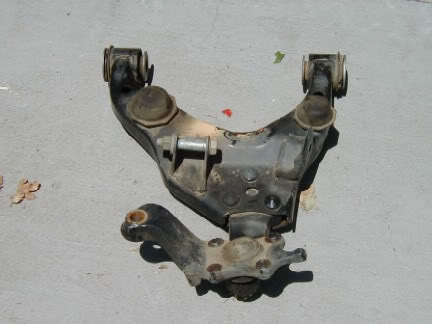
That's just my thoughts....interesting discussion...maybe I am totally wrong... Who knows!!!

#19
Newer designed used on all new trucks..note ball is below the load arm like the Torsion bar trucks upper load arm. They now use 2 huge securing bolts which to date I have not heard of them failing. The load is now on top of the ball instead of around the neck of the ball and on the lip of the socket.
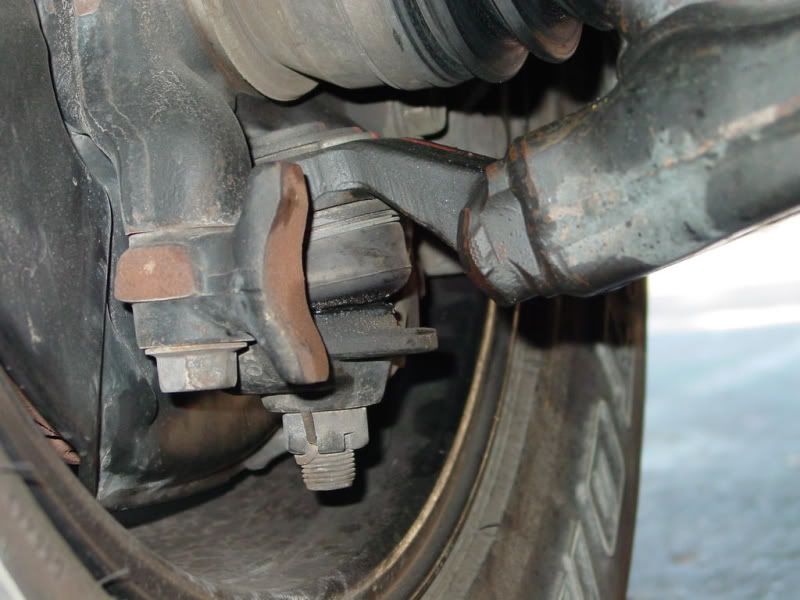
Wear around the neck of ball which wears the lip of socket then pulls out!!


Wear around the neck of ball which wears the lip of socket then pulls out!!

The wear shown on the ball joint stud above is not consistent with the older or newer steering knuckle designs. That type of wear would only be caused by the first steering knuckle designs used with coil spring suspensions. It's also shown next to the first design ball joint housing socket. Which suggests that I'm right in every aspect as far as my explanation for why that happened. In other words, that wouldn't happen with the second design steering knuckle.
So please quit while you're ahead here would ya? I get your point already. You obviously don't get mine. But that's just fine. You win. Let's just call it a game...

Last edited by MudHippy; 09-04-2012 at 03:02 PM.
#20
The mounting bolts don't fail on the second design because there's no lateral load being applied to them. As the are no longer being used to steer the wheels.
The wear shown on the ball joint stud above is not consistent with the older or newer steering knuckle designs. That type of wear would only be caused by the first steering knuckle designs used with coil spring suspensions. It's also shown next to the first design ball joint housing socket. Which suggests that I'm right in every aspect as far as my explanation for why that happened. In other words, that wouldn't happen with the second design steering knuckle.
So please quit while you're ahead here would ya? I get your point already. You obviously don't get mine. But that's just fine. You win. Let's just call it a game...
The wear shown on the ball joint stud above is not consistent with the older or newer steering knuckle designs. That type of wear would only be caused by the first steering knuckle designs used with coil spring suspensions. It's also shown next to the first design ball joint housing socket. Which suggests that I'm right in every aspect as far as my explanation for why that happened. In other words, that wouldn't happen with the second design steering knuckle.
So please quit while you're ahead here would ya? I get your point already. You obviously don't get mine. But that's just fine. You win. Let's just call it a game...






